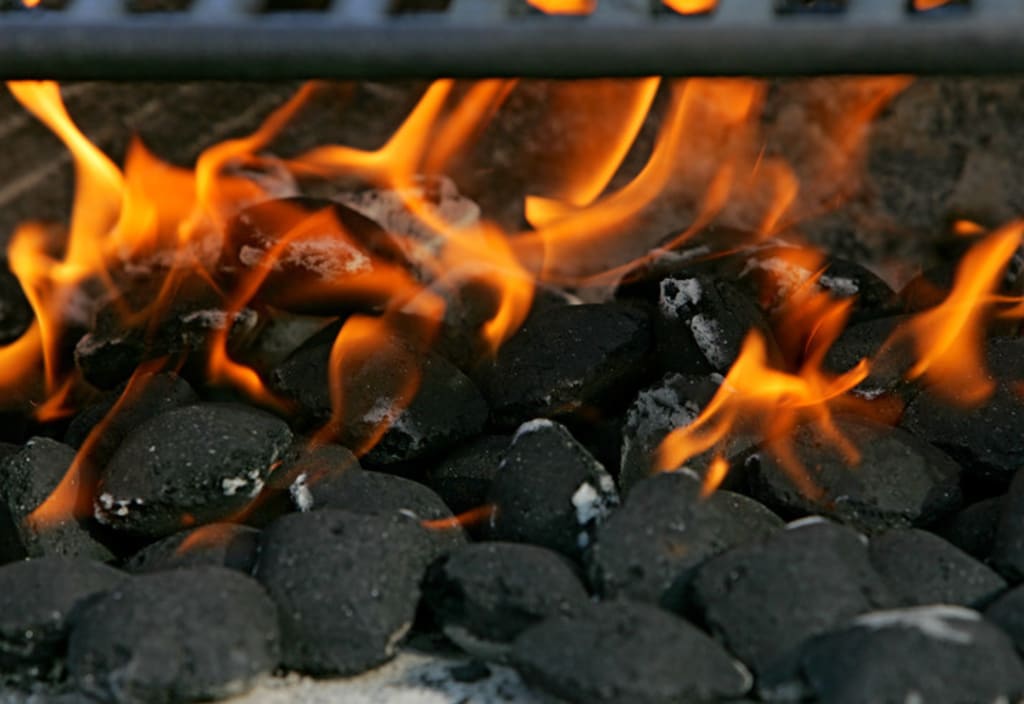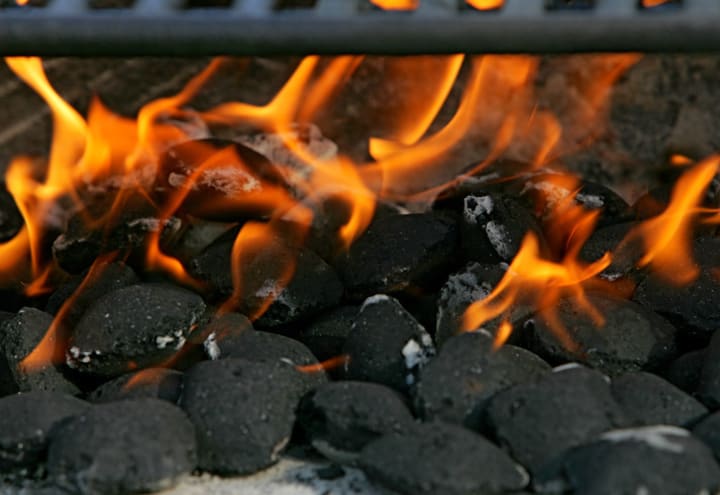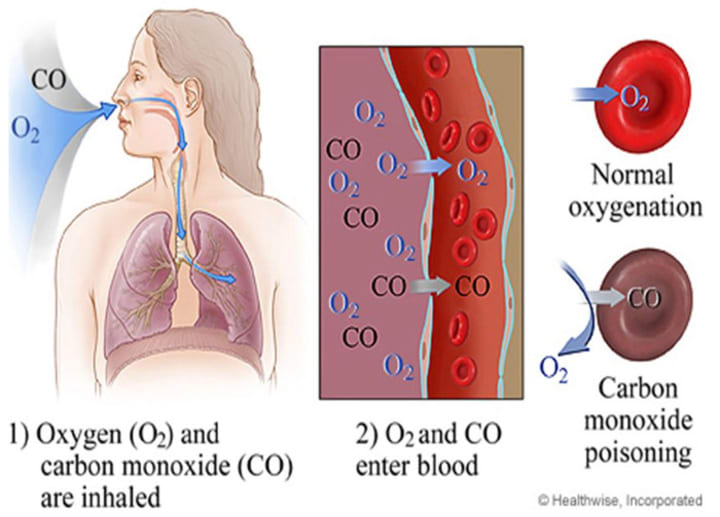How to prevent carbon monoxide poisoning when heating
No one could have imagined that this odorless, colorless gas could kill a person so quickly!

The temperature suddenly drops, many families buy heaters or use two-way air conditioners to keep warm. However, not everyone can afford to equip them, especially those in mountainous areas where the economy is not yet developed. Burning coal for heating is a way for them to cope with the weather. Every year, there are cases of death or gas poisoning due to burning coal for heating in closed rooms.
Doctor Le Hoan, deputy head of the Department of Respiratory Endocrinology, Hanoi Medical University Hospital, said that burning honeycomb coal or firewood for heating in an oxygen-deficient environment will produce CO2 and CO, two gases that are not necessary for the body. Of these, CO is an extremely toxic gas, colorless and odorless, so many people do not know, gradually feel difficulty breathing and then faint or pass out while sleeping. Victims who inhale CO will often suffer brain and heart damage, and in mild cases, they will suffer from respiratory diseases such as asthma, bronchitis, pneumonia, and in more severe cases, they can die.
The question is, is coal gas potentially deadly?
Unfortunately, the answer is yes . You need to know that burning charcoal in the absence of air will produce a very toxic gas called carbon monoxide (CO) .

Coal gas emits a lot of CO - a silent killer.
Victims who inhale this gas will die in severe cases, and will be left with neurological and mental sequelae in less severe cases.
How does carbon monoxide kill people?
It should be noted that carbon monoxide (CO) is a colorless, odorless gas that is released from fuels such as charcoal, propane, methane, or incompletely burned petroleum.

When the body inhales this gas, it enters the lungs and then into the blood.
When the body inhales this gas, it enters the lungs and then the blood, where CO combines with hemoglobin (red blood cells) in the blood to form carboxy hemoglobin (HbCO).
This substance prevents the release of oxygen in cells, reducing the blood's ability to carry oxygen, leading to hypoxia.
When the red blood cells run out of oxygen, the body also runs out of oxygen. In addition, CO gas can also combine with myoglobin (pigment in muscles) to damage cells and create an acidic metabolic environment.
Because it is a colorless, odorless, non-irritating gas, it is difficult for the victim to sense the presence of CO in the air.
Only when the victim begins to feel "abnormal" will the limbs no longer move, leading to coma and death. The reason is because CO gradually creeps into the body, causing a decrease in oxygen in the blood, in all organs.
The more oxygen an organ needs, such as the brain or heart, the more danger it is in.
Symptoms of CO poisoning
Symptoms of CO poisoning often begin with headache, nausea, dizziness, difficulty breathing, and then slowly leading to coma.
At a more severe level, the victim will feel chest tightness, blurred vision, difficulty breathing, rapid pulse... the lungs seem to be congested and no longer function.
At this point, the victim may have seizures, lose consciousness, suffer permanent brain damage, cardiac arrest, and death.
According to scientific research data, even in the mildest cases of CO poisoning, up to nearly 50% will experience complications in mental health, nerves, and brain damage later. The mildest can be memory loss of varying degrees, even coma, or complete amnesia.
Therefore, Dr. Nguyen Trung Nguyen - Director of the Poison Control Center of Bach Mai Hospital recommends to people: Absolutely do not burn fuels such as honeycomb coal, firewood, charcoal, gas, etc. in closed spaces. If you have to use them, do not use them in closed rooms, but leave the door open to allow adequate air circulation. It is best to choose another method of heating.
Another problem is that the current housing structure of people has a lot of problems with ventilation. Most of them are self-built, self-designed and very closed without a ventilation system or at least have vents, a way to pump air in from the outside and suck air out from the inside.
What to do when discovering a victim of CO gas suffocation?
If you suspect someone has been poisoned by CO gas, you should immediately remove the patient from the area, or open all the doors to let air into the house - by all means to stop the patient from being exposed to CO gas.
If the patient is only mildly poisoned, he or she will quickly recover and regain consciousness. However, in more severe cases, artificial respiration should be performed and the patient should be taken to the emergency room immediately.
The rescuer should also call for help in case of being affected by toxic gas.
Oxygen is considered the “antidote” for CO poisoning. Therefore, when providing first aid, family members should immediately give the victim an oxygen mask. If the victim has respiratory arrest, we must perform CPR and quickly take them to the nearest medical facility.
Doctor Nguyen Khanh Duong, Department of Emergency Medicine, University of Medicine and Pharmacy Hospital, Ho Chi Minh City, recommends that people should not put a charcoal stove to warm up in the bedroom, not sleep in the garage or leave the engine or generator in a place with no air (basement, under the stairs) to avoid CO poisoning.
Heating with coal is even more dangerous for the elderly and children, those with weak respiratory systems and low resistance. Placing coal in the house or room for heating can also cause fire or serious burns. Therefore, everyone should limit burning coal for heating, especially families with new mothers and young children.
In case you often have to use a charcoal stove for cooking, you should place the stove in a well-ventilated area. Do not place the charcoal stove in the bedroom or in a place that is not windy. Do not burn it overnight. Install a heating lamp and two-way air conditioner to increase the temperature in the room. Maintain the room temperature at 25-28 degrees Celsius, airy but avoid drafts. Do not let the room temperature get too warm as it can cause burns to infants or heat shock when going out in the cold, increasing the risk of numbness, poor blood circulation, even hypothermia and stroke.
About the Creator
HK Decor
Telling stories my heart needs to tell <3 life is a journey, not a competition
If you like what you read, feel free to leave a tip,I would love some feedback
https://sites.google.com/view/hk-decor/trang-ch%E1%BB%A7
Enjoyed the story? Support the Creator.
Subscribe for free to receive all their stories in your feed. You could also pledge your support or give them a one-off tip, letting them know you appreciate their work.






Comments
There are no comments for this story
Be the first to respond and start the conversation.